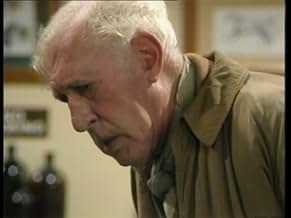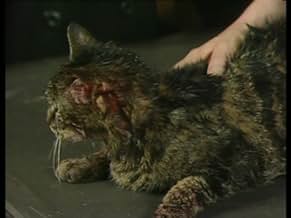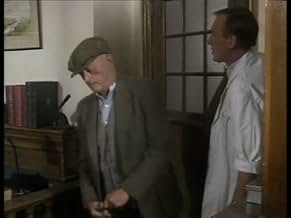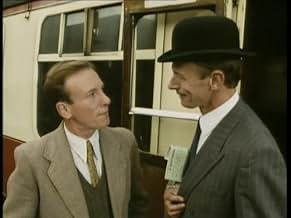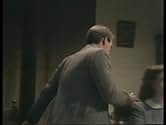Les épreuves et les mésaventures du personnel d'un bureau vétérinaire de campagne dans le Yorkshire, des années 1930 aux années 1950.Les épreuves et les mésaventures du personnel d'un bureau vétérinaire de campagne dans le Yorkshire, des années 1930 aux années 1950.Les épreuves et les mésaventures du personnel d'un bureau vétérinaire de campagne dans le Yorkshire, des années 1930 aux années 1950.
- Nommé pour 1 Primetime Emmy
- 1 victoire et 3 nominations au total
Parcourir les épisodes
Avis à la une
The original series of 41 episodes was a beautifully accurate version of the Herriott books. Superb acting is expected in a British production, and this is no exception, as the actors do an amazing job of capturing the essence of the even the minor characters. The vets, Christopher Timothy, Robert Hardy and Peter Davison are especially true, as is Carol Drinkwater (most superior to her replacement as Helen). The series also captures the essence of the Yorkshire Dales: the lovely green hillsides, wide vistas and individualistic spirit. Visiting that area is like stepping into the Herriott stories, as we discovered in 1982 and many subsequent visits. And having a pint with the cast between shooting on location showed us how authentic the series is. Many people don't realize that these are not `warm, fuzzy' animal stories. Each episode has a moral point to make and makes it subtly, through action not speeches. The series is also inspirational, for it is, implicitly, the story of the birth of scientific veterinary medicine.
This film (and indeed series) is set in 1930's Britain, not the 1940's as stated elsewhere in this site, as Britain was involved in that fracas called the Second World War from 1939 and both Farnon and Herriot joined up with the Royal Air Force.... The books did carry on for the post war period but the film is firmly in the 30's! The attention to detail - even down to the advertisements by the roadside, is extraordinary, whilst the realisation of pre-war Britain, with its optimism, rugged individuality and, determination in sometimes very difficult circumstances is heartwarming. As a small piece of trivia, Christopher Timothy, who plays James Herriot has a limp in the later series, as he (for real) broke his leg during the filming of series two. Hardy, who played S. Farnon, is now even better known for his role as the Minister For Magic, in the Harry Potter films!
The life and times of Yorkshire Dales veterinary practise in the years leading up to WWII. Based on the million selling James Herriot autobiographies.
James Herriot (real name Alfred White) came to Yorkshire as a young vet looking for his first job and despite being of Scottish origins made the place his own. They have even turned his old surgery (in Thirsk) in to a museum and it well worth a visit. Look it up on the internet if you are visiting the area.
There are very few books well enough written that within a few pages you are dragged inside and falling in love with the characters. I was around when they still were being written and when a new one came out you could be sure I'd be first in line at the bookshop. I'd even set the alarm clock an hour early so I could find more time for them.
(I doubt I'll ever be as excited as that over a book again!)
The fact that the main man carried on long after becoming a millionaire author showed that he was a man of dedication and integrity. Today there is a shortage of farm vets in that part of the world. The life is no easier now than it was then.
The series got together a dream cast and the male leads are fabulous and very true to the pages of the book - while the women try and make the best of their tea making, love-interest and showing-people-in roles.
Many of the pets on the show were treated for free in exchange for them being used on the show. It doesn't get any more "method" than having your hand up the backside of a cow for real! In one episode a foreign female vet seems poised to get involved in the practise -- but she only seems to upset the happy home and soon leaves. Also to be noted is that pages of the book involved bad people and youngsters who turned to crime. Even a suicide. You won't find them here. Nevertheless some of the farmers are less than pleasant people -- with the vets prepared to take them on as clients despite their character and (in real life) propensity for not paying their bills.
The central problem with this series is that sometimes you feel you are born in the wrong age. Oh for the time when country cottages were within the budget of a working man and everyone had time to stop and chat over tea.
Yes, it is a bit misty eyed and cute (although not all the animals are), but there are plenty of morals and lessons-in-life too.
James Herriot (real name Alfred White) came to Yorkshire as a young vet looking for his first job and despite being of Scottish origins made the place his own. They have even turned his old surgery (in Thirsk) in to a museum and it well worth a visit. Look it up on the internet if you are visiting the area.
There are very few books well enough written that within a few pages you are dragged inside and falling in love with the characters. I was around when they still were being written and when a new one came out you could be sure I'd be first in line at the bookshop. I'd even set the alarm clock an hour early so I could find more time for them.
(I doubt I'll ever be as excited as that over a book again!)
The fact that the main man carried on long after becoming a millionaire author showed that he was a man of dedication and integrity. Today there is a shortage of farm vets in that part of the world. The life is no easier now than it was then.
The series got together a dream cast and the male leads are fabulous and very true to the pages of the book - while the women try and make the best of their tea making, love-interest and showing-people-in roles.
Many of the pets on the show were treated for free in exchange for them being used on the show. It doesn't get any more "method" than having your hand up the backside of a cow for real! In one episode a foreign female vet seems poised to get involved in the practise -- but she only seems to upset the happy home and soon leaves. Also to be noted is that pages of the book involved bad people and youngsters who turned to crime. Even a suicide. You won't find them here. Nevertheless some of the farmers are less than pleasant people -- with the vets prepared to take them on as clients despite their character and (in real life) propensity for not paying their bills.
The central problem with this series is that sometimes you feel you are born in the wrong age. Oh for the time when country cottages were within the budget of a working man and everyone had time to stop and chat over tea.
Yes, it is a bit misty eyed and cute (although not all the animals are), but there are plenty of morals and lessons-in-life too.
Set in the ruggedly beautiful Yorkshire Dales during the years leading up to WW2, All Creatures Great & Small follows the adventures of a veterinary practice supporting the local farming community in 1930s Northern England. This wonderful adaptation of the books by James Herriot has timeless appeal for the whole family. I've watched the series in its entirety three or four times since it was made and it still remains fresh and very enjoyable. In addition to an abundance of charm and humor, the quality that makes this TV series so exceptional is believability. After watching a few episodes, the viewer becomes convinced that James Herriot, Sigfried Farnon, and his brother Tristan Farnon are really qualified vets...just watch one or two of the many scenes involving surgery or calfing and you will see my point. Real proceedures, which the actors actually perform, are conducted under the expert guidance of qualified vets on the set, including the author James Herriot himself. The many and varied supporting actors are also convincing as real people involved in real situations. The leading cast led by Christopher Timothy as James Herriot, Robert Hardy as Siegfried Farnon, Peter Davidson as his brother Tristan, and Carol Drinkwater as James' wife Helen, are all fabulous. The powerful presence of Robert Hardy as Siegfried is particularly compelling, and its easy to see why he's considered by many to be the finest actor in Britain. When compared to other programs of its genre and indeed other TV series in general, this adaptation of the classic All Creatures Great & Small is simply outstanding. Eleven out of ten.
I'll make it unanimous (so far). When All Creatures first aired in the States, I had already enjoyed the books immensely and doubted that a television production could do author James Herriot's work justice.(A pen name, I believe his real name is Alfred White.) I was delighted to be wrong in that assumption, brilliantly adapted and endearingly performed. It quickly became and remains to this day one of my favorite programs. I particularly recommend the earlier seasons for a number of reasons, not the least of which is Carol Drinkwater as Helen Herriot. I only wish that like Holly the computer on Red Dwarf, who had Lister wipe his memory banks of the collected works of Agatha Christie so that he would have something interesting to read. That I could experience All Creatures Great and Small again, for the first time.
Le saviez-vous
- AnecdotesAlf Wight (the real James Herriot) initially stipulated that all the incidents in the TV series had to be closely based on those in his books. By the end of Season 3, all of Wight's books had been televised, and it was thought that the series would have to end. However producer Bill Sellars persuaded Wight to let the scriptwriters devise new stories as long as the scripts were approved by him and remained faithful to the spirit of his books.
- Citations
Mrs. Pumphrey: [orders Hodgekin to throw rings for her Pekinese, Tricki Woo. He throws one feebly] Oh, a little further than *that*, Hodgekin!
Mrs. Pumphrey: [he throws it miles] Not into the rose bed, Hodgekin! We wouldn't want Tricki to get pricky-paw!
Hodgekin: [muttered] Who wouldn't?
Mrs. Pumphrey: *What* was that? What was that, Hodgekin?
- ConnexionsFeatured in Comic Relief: The Invasion of the Comic Tomatoes (1993)
Meilleurs choix
Connectez-vous pour évaluer et suivre la liste de favoris afin de recevoir des recommandations personnalisées
Détails
- Date de sortie
- Pays d’origine
- Langue
- Aussi connu sous le nom de
- Der Doktor und das liebe Vieh
- Lieux de tournage
- Langthwaite, Richmond, North Yorkshire, Angleterre, Royaume-Uni(hump-backed bridge which James and Siegfried drive over in opening titles of first two series)
- Sociétés de production
- Voir plus de crédits d'entreprise sur IMDbPro
Contribuer à cette page
Suggérer une modification ou ajouter du contenu manquant


